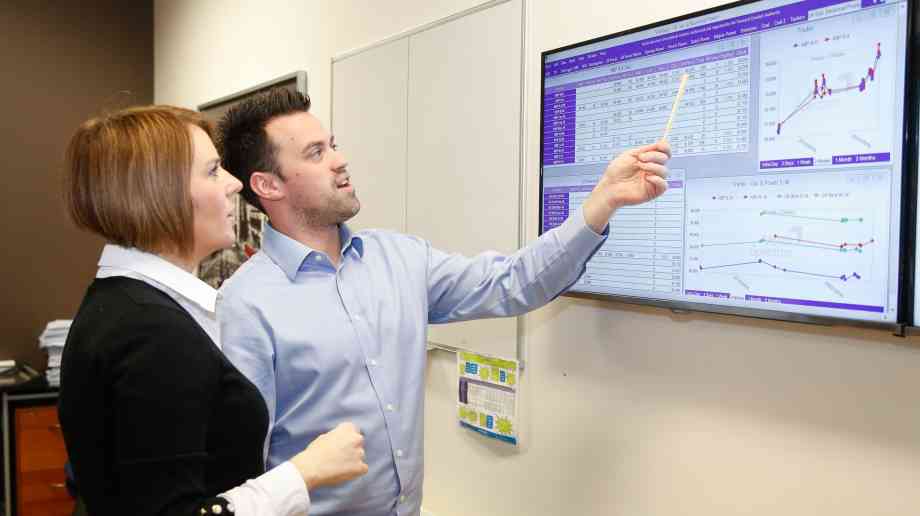
What the changes to energy legislation mean
Educational organisations are being urged to make themselves aware of upcoming changes to government energy legislations that will ultimately affect their businesses and management of their energy consumption. Adam Pigott, energy engineer from Kinect Energy Group, discusses these changes
There are a number of changes to government energy legislations that are coming into effect that could have a major impact on many operating in the education sector.
These new updates are being introduced to ensure businesses identify energy efficiencies and report on their carbon footprint.
Requiring rigorous recording of their energy consumption, eligible organisations, including schools, academies, universities and other educational institutions, that fail to comply could face large fines.
You may think this is just more legislation being introduced to generate more work for businesses, but many of the upcoming initiatives also offer opportunities for decision makers and financial controllers in the sector to make significant savings, while also becoming more energy efficient in their gas, electricity and water use.
Streamlined Energy and Carbon Reporting (SECR)
The new Streamlined Energy and Carbon Reporting (SECR) Framework will launch in 2019 as part of a drive to enable business and industry to make a 20 per cent reduction in energy consumption and CO2 emissions by 2030.
While initiatives like SECR are broadly welcomed by the industry and will have a significant impact on the UK’s wider carbon footprint, in the short term the implementation of SECR may create more work for organisations, in particular smaller ones.
Although full governmental guidance remains a work in progress, the framework looks set to broaden the number of organisations that need to comply, from roughly 6,000 with the existing Carbon Reduction Commitment (CRC) reporting requirement, to nearly 12,000.
Furthermore, the new legislation introduces the requirement to report not just on electricity and gas consumption, but on energy used by business-related transportation – a requirement that introduces a whole new set of challenges.
Unlike the CRC, where qualification was based on a reasonably high energy consumption threshold, SECR will impact all UK organisations that employ 250 people or more, or who have a turnover in excess of £36m, and a balance sheet of £18m.
Many participants will not be particularly energy intensive and, consequently, may not currently have the necessary structures in place to capture and report the mandated information.
For these businesses it will be a steep learning curve and it will be interesting to see how in the longer term the resultant benefits stack up against the additional administrative requirement.
Energy Savings Opportunity Scheme (ESOS) Phase Two
Meanwhile, the Energy Savings Opportunity Scheme (ESOS) Phase 2 will also present challenges and opportunities in equal measure.
ESOS first came into effect in 2015 to raise awareness of how much energy large organisations consume and ultimately provide recommendations to reduce the amount of energy being wasted, and the associated emissions of CO2.
As a mandatory legislation, eligible businesses have to comply with ESOS and many thousands have reaped the benefits of Phase 1, having saved substantial amounts on their energy bills over the last few years.
Phase 2 has launched, and businesses are being urged to take action now to ensure that they are ESOS compliant well before the December 2019 deadline, with a view to avoiding a potential shortage of accredited professionals the sector experienced in the run up to the close of Phase 1.
Phase 2 will also affect those that previously completed compliance as part of Phase 1, so I would urge all organisations within education, even those that complied four years ago, to assess the extent of their operations in the UK from top level down.
If your organisation employs 250 staff or more or have a turnover in excess of 50m and a balance sheet in excess of 43m, participation is mandatory.
Eligible organisations need to calculate their total energy consumption for a 12-month period, including not only all energy sources used within premises, but transportation too.
Ninety per cent of the total energy consumption then needs to be subject to a representative energy audit – a time consuming process, underlining the need for early action.
The sum of the total energy consumption and the results of the energy audits then need to be presented at board level within the organisation and compliance then needs to be lodged with the Environment Agency by 5 December 2019.
Energy cost reductions go straight to the bottom line, whilst the associated reduction in CO2 emissions brings with it significant reputational benefit.
And, given that forecasts for both non-commodity and commodity costs show continued increases, the most efficient way to make savings is to reduce consumption and mitigate exposure.
ESOS provides the ideal opportunity to identify ways to become more energy efficient and ultimately reduce costs.
And consequently, adopting a lowest-cost-possible, tick-box approach to compliance with ESOS Phase 2 does not represent value in the longer term.
Organisations taking shortcuts in their approach to complying with the new framework could lead to them missing out on cost-saving benefits, or even facing a financial penalty.
Adopting a diligent approach to ESOS compliance and to the new SECR legislation may outwardly be viewed as costly and time-consuming, but it can actually deliver real value to schools, academies and other organisations.
By introducing processes within your business, these new legislations should just become a regular part of your energy assessment.
Latest News
09/01/2026 - 10:13
The measure, added to the Children’s Wellbeing and Schools Bill, delivers on the commitment made in the government’s manifesto to bring multi academy trusts into the inspection system.
08/01/2026 - 10:30
The government is launching a new app allowing students to view their GCSE results on their phones for the first time from this summer.
08/01/2026 - 09:45
Education Business LIVE has announced that Professor Samantha Twiselton OBE of Sheffield Hallam University will speak at the event in March 2026, delivering two thought-provoking sessions focused on initial teacher training and SEND provision.
07/01/2026 - 10:10
Solve for Tomorrow is a free, curriculum-linked programme which is mapped to Gatsby Benchmarks 4, 5, and 6, helping teachers embed careers education without adding to workload.
06/01/2026 - 10:24
London's universal free school meals programme has not led to improvements in pupil attainment during its first year, but has eased financial pressure and reduced stress for families.







